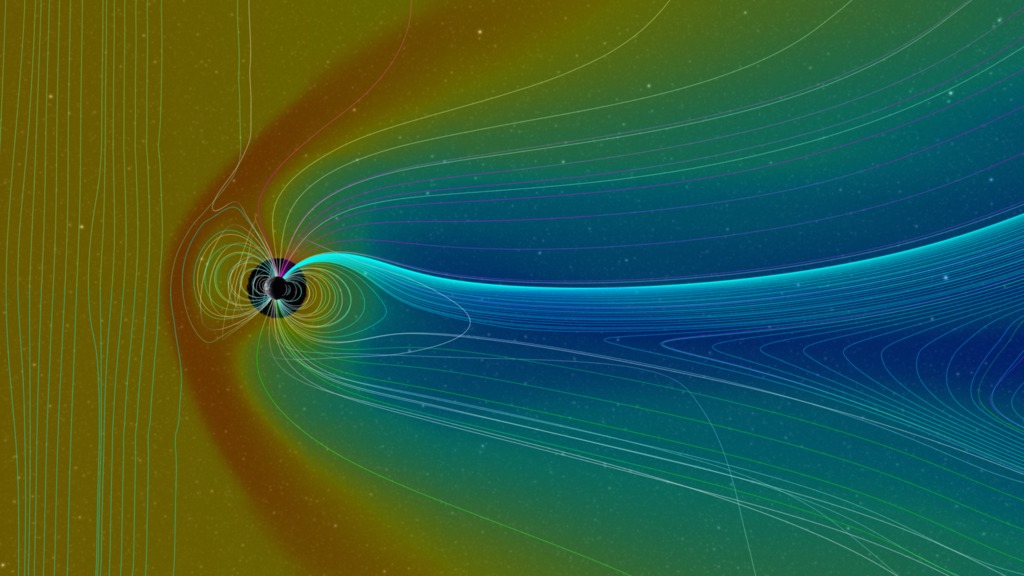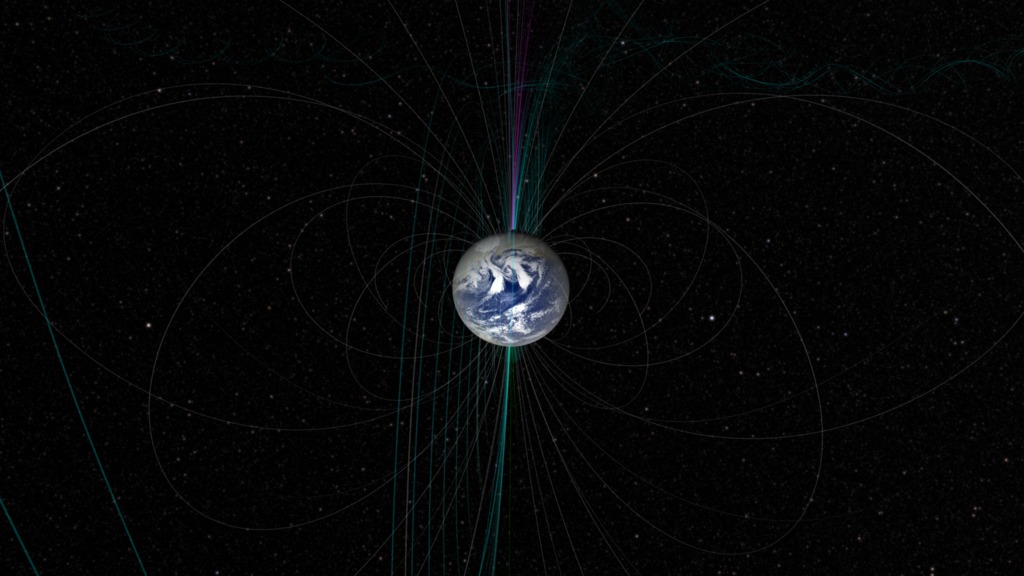Comparing CMEs
This video features two model runs. One looks at a moderate coronal mass ejection (CME) from 2006. The second run examines the consequences of a large coronal mass ejection, such as The Carrington-Class CME of 1859. These model runs allow us to estimate consequences of a large event hitting Earth, so we can better protect power grids and satellites.
In an effort to understand and predict the impact of space weather events on Earth, the Community-Coordinated Modeling Center (CCMC) at NASA Goddard Space Flight Center, routinely runs computer models of the many historical events. These model runs are then compared to actual data to determine ways to improve the model, and therefore forecasts of future space weather events.
Sometimes we need an actual event to have data for comparison. Extreme space weather events are one example where researchers must test models with a rather limited set of data.
The vertical lines on the left represent magnetic field lines from the sun.

Watch the CME as a GIF
Credits
Please give credit for this item to:
NASA's Goddard Space Flight Center
-
Animator
- Tom Bridgman (Global Science and Technology, Inc.)
-
Video editor
- Genna Duberstein (USRA)
-
Narration
- Tom Bridgman (Global Science and Technology, Inc.)
-
Narrator
- Tom Bridgman (Global Science and Technology, Inc.)
-
Producer
- Genna Duberstein (USRA)
-
Scientist
- Michael Hesse (NASA/GSFC)
-
Project support
- Aaron E. Lepsch (ADNET Systems, Inc.)
Release date
This page was originally published on Thursday, September 25, 2014.
This page was last updated on Wednesday, May 3, 2023 at 1:50 PM EDT.
Series
This visualization can be found in the following series:Tapes
This visualization originally appeared on the following tapes:-
Comparing Coronal Mass Ejections
(ID: 2014090)
Wednesday, September 24, 2014 at 4:00AM
Produced by - Will Duquette (NASA)


